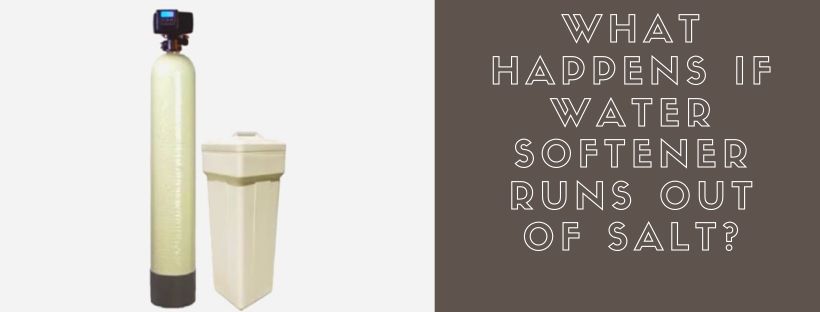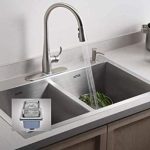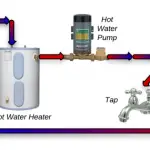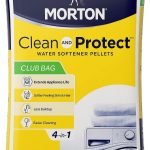Opting for the best water softener at your home was the best possible decision of your life. But, have you ever given a thought to the maintenance and servicing that it requires? But despite having a water softener, have you been observing recently that the limescale build-up on your plumbing? Or maybe the soap is not lathering up properly when taking a shower? That can be because the water softener has run out of salt.
What Happens if Your Water Softener Runs Out of Salt?
When the salt in the water softener runs out, it no longer is capable of regenerating the water softener resin. That would result in the resin beads not being able to remove the hard ions and thus your water remains hard. This would mean you will get hard water and iron staining or even other issues concerned with hard water.
When you add salt to the water softener, it simply assists in removing the hardness of the water. The time period that the salt will last will depend on several factors. The level of hardness in the water, the water volume, type of the softener used, size of the tank, and the age of the water softener device.
When the water softener runs out of the salt, the water softener will no longer be able to reduce the hardness in the water. That way, it would simply supply you with the hard water. In essence, in such a case, the water entering your water softener will remain the same when it comes out of it. Not any kind of process is done on the water.

How Does Water Softener Work?
Each of the water softeners has its own way of working. Under ideal conditions, you will find most of the water softeners come with a specific design that consists of two major parts or components:
- The resin tank – also called the mineral tank
- The brine tank
The resin tank consists of a small bead styled which is referred to as water softening resin. The brine tank is where you would add up a water softening salt. The traditional water softeners come with separate tanks for these components, while the modern designs combine the two components.
Water softeners use the process called ion exchange for softening your hard water. The complete process can be explained in the following stages:
- Water enters the resin tank. The beads have negatively charged ions in the form of sodium ions.
- The positive ions of magnesium and calcium in the hard water are attracted to the sodium ions.
- The softened water then moves ahead to where it is needed – at the faucet, or shower.
The brine tank is what regenerates the resin beads. The water from the brine tank moves to the resin tank for performing a reverse ion exchange. The salt in the brine tank has sodium ions and when the water flows into the resin tank, the resin trades off the hard ions to the sodium ions. Thus the resin beads are now ready for the next round of softening the water.
How Do You Know When a Water Softener Runs Low on Salt?
The salt in your brine tank is an essential element that needs you to keep a check on to ensure that the water softening process works as intended. There are a few telltale signs that indicate that your water softener needs salt.
The prime signs that act as indicators when a water softener runs out of slat can be:
- Scum on your bathroom tiles – Ugly and reddish browns can be one of the prime concerns you may come across.
- Change in water taste – A strange odor or taste of water can be a good indicator to let you know that the water softener is running out of salt. If your water has a metallic taste, you can be assured that the water softener needs you to fill up salt.
- Soap cannot lather – You will also notice that the soap does not lather as expected. You may also find that soap scum accumulates all over your bathroom.
- You cannot shower comfortably – You will not get a good showering experience and cannot clean yourself up.
What Hard Water Can Do To Your Plumbing System?
Hard water can damage your plumbing system in several ways. It can rust and block your plumbing with limescale deposits.
Some of the damages caused by hard water to your plumbing system can include:
- It causes water clogs – Hard water can leave scums and limescale deposits in your plumbing system. The limescale and clogs can be formed in the faucets, pipes, and fixtures. These can build up over time and can result in clogs and corrosion
- Reduced flow efficiency – the limescale formation will reduce the diameter of your pipes and fixtures. This will reduce the flow rate drastically.
- Your appliance efficiency is reduced – The hard water can also reduce the lifespan of your appliances. The low pressure or flow rate can jeopardize the normal functioning of your appliances such as washing machines and dishwashers.
- It can even cause leakage – The corrosion in the pipes and joints due to hard water can cause leakage.
How Much Salt Should be Added to a Water Softener?
If you want your water softener to work, you need to add a sufficient amount of salt to the water softener. The level should ideally be at least at a level of 3 to 4 inches above the water level. In some cases, you should ensure that the salt level is at least half the level of your brine tank. It is also suggested to loosen any of the encrusted salt before you add a new slat.
The exact amount of salt you would add to the water softener would be dependent on the size of your tank. Check out the size of the tank and calculate the right amount of salt you need to add to your water softener. In any of the cases, the amount of salt in the tank should always be more than the water that it handles in every batch.
How often should you add salt to the water softener? In most cases, your water softener should handle it on its own, but we would recommend monitoring it at least once every month. If you notice that the brine tank is less than half filled or looking quite dry, you can add up more salt. The amount of salt added to the water softener is largely dependent on the quality of your tap water. It is quite hard, you will need to add more salt and will need to change it quite often.
The Best Type of Salt to Use in Your Water Softener
The best type of salt you need to use in a water softener would be to use the common salt or potassium chloride that has been specifically been made for the water softener purposes. It is not recommended to use table salt or dicing salt.
The primarily used type of salts will include Sodium chloride and Potassium chloride.
Can You Use Table Salt If You Don’t Have Softener Salt?
That can be quite intuitive – since we recommend using sodium chloride in a water softener, some of you may be tempted to grab it and use it in a water softener. But, using table salt or dicing salt is not recommended to be used in a water softener.
The table salt is made of extremely smaller crystals and is not at all suitable for a water softener. While the composition of the table salt is the same as that of the rock salt or any other type of sodium chloride, the smaller crystal size may not help adhere to the hard ions from the hard water. It can even form a slushy mixture and thus the intake valve at the softener.
Checking the Salt Level in the Water Softener – How To Do It?
Checking the salt level in the water softener can be quite a tough task in many cases. A few modern water softeners display the salt water level in the softener. That should provide you an easy option to check the salt level in the brine tank.
If your water softener does not offer you such as option, you can check the salt level manually. In case the slat level is below the halfway mark of the tank, it would be recommended to fill it up to up to 3/4th level of the tank. You are expected to fill it up to at least the halfway mark. The water level should never be above the salt level. If you find that the water level is below the salt level, you can add more salt.
This manual checking apart, there may be a few tell-tale signs that can indicate that the salt level needs to be increased. Some such signs include stains on clothes, faucets, corrosion or limescale in pipes and fixtures, and a change in the taste of water.
Can You Overfill a Water Softener with Salt?
Overfilling the water softener with salt is not recommended at all. This can result in a phenomenon called Bridging. The salt is used as a regenerant for the resin beads and too much salt can cause a huge build-up and solidification of the salt. This can reduce the regeneration capability of the salt.
Bridging can result in clogging of the system. This will further result in the reduction of the water pressure consistently. The water softener may not be able to soften the water appropriately.
The Closing Thoughts
There are several benefits associated with water softeners. If you are not careful with looking out for when water softener runs out of salt, you may end up having to face the unwanted effects of hard water. The damage caused to the pipes and other appliances can be averted if you take optimum care to understand what happens if the water softener runs out of salt water and take the right precautions to avoid any such possibility.












Thank you for writing this article, I thought our softener water was broken or something was wrong because recently the water appeared to be scaled again, turns out it was just because it ran out of salt. We will add salt to it, your article was very helpful for me.